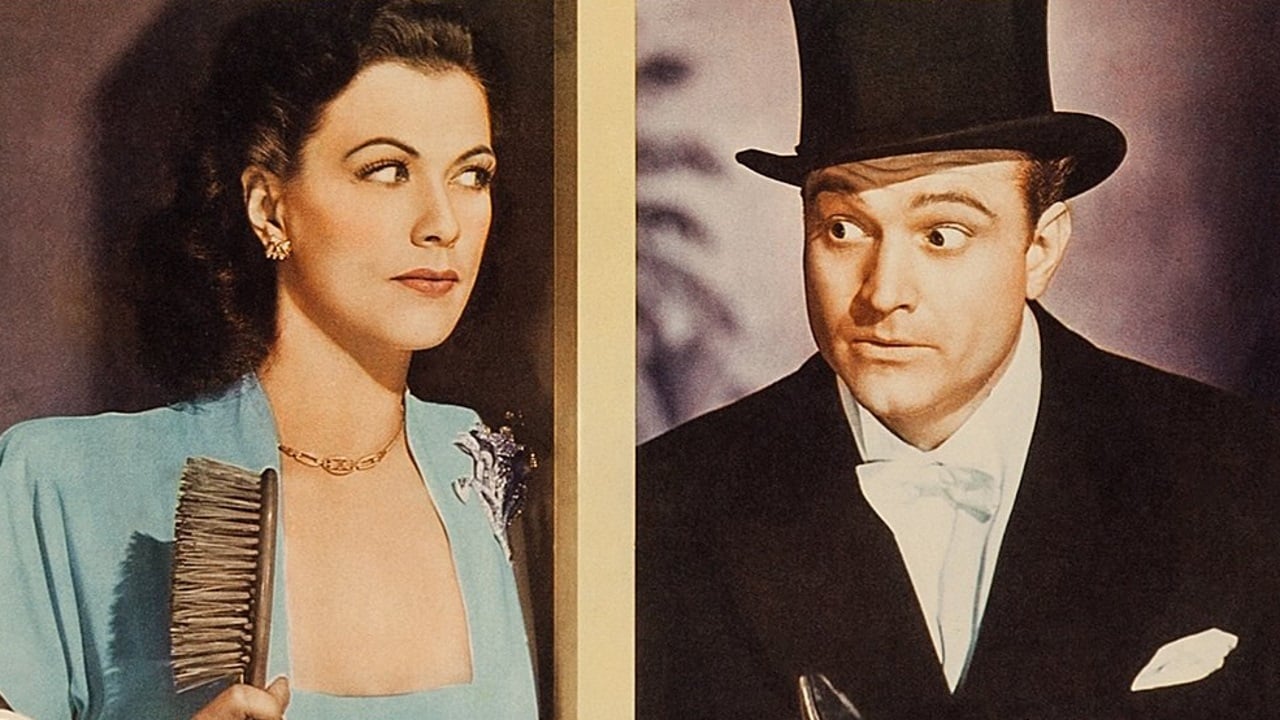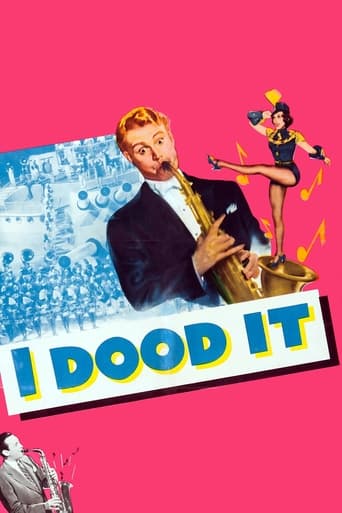

Just saw this on TCM, and I enjoyed it very much. Red Skelton was a hoot, and Eleanor Powell - even my 26-year-old son thought her dance numbers were 'impressive.' Our favorite of these dance numbers was the first one at the beginning of the movie, a cowboy production where Eleanor Powell danced with lariat-wielding cowhands, then roped a post several times in a row, showing admirable skill. The rest of the movie contains some drama, intrigue, romance, and even a bit of derring-do. And, of course, more dancing and music, including appearances by Jimmy Dorsey. If you like musical comedies of the thirties and forties, this is one of the best!
... View MoreWhile there is a definite art deco look to the mediocre musical comedy "I Dood It", it is a minor credit in the list of masterpieces by the great Vincent Minnelli, a sub-par entry in the credits of the great MGM musicals. This comedy/farce has a star-struck dry cleaner (Red Skelton) so enamored of Broadway star Eleanor Powell that he follows her everywhere she goes. (Today we call that stalking.) To get into a nightclub (featuring the Dorsey Brothers) where she goes regularly, he "borrows" a tailored suit (which coincidently fits him) and ends up married to her when she uses him to make her beau jealous because of his interest in another woman. But she finds she can't get rid of Skelton too easily, and he ends up saving the day when her co-star tries to rob a warehouse next to the theater in which they are appearing.Little thought was put into this musical for the poor Ms. Powell as it includes two numbers previously seen in two of her other movies. A hula from "Honolulu" is lifted right out of that film, as is the final from "Born to Dance". While Ms. Powell has aged well in the seven years since that film, she doesn't really look exactly like what she used to anymore, so don't be surprised when you find yourself shaking your head. Her one dance number (a tricky rope tap dance) does stand out, as does Lena Horne's walk-on of "Jericho". Skelton and Powell share a nightclub dance where he is trying to avoid the actual owner of the suit that ends up comical due to his paranoia over being exposed. Another highlight is the "wedding night" scene where a passed out Powell (having taken a sleeping potion) keeps falling out of bed and Skelton tries different acrobatic ways to get her back in so she can "sleep it off".However, the play within the play (obviously a rip-off of "Gone With the Wind") is so bad it seems like something spoofed on "The Carol Burnett Show". And with Skelton yelling about a bomb hidden in the basement, you want to yell at your TV, "No. It's not in the basement. It's on the stage!". There is a funny bit of "Noises Off!" like humor with Skelton messing up when he ends up in one of the actor's costumes on stage then fights with the villain on a rising set-piece. So while there are some really funny moments (influenced with the help of "Comedy Adviser" Buster Keaton) they are few and far between, and much of the film is ridiculous.Patricia Dane's horrendous character seems to have no motivation for her nastiness towards Powell, although Powell isn't the sweet ingénue here, destroying a dressing room in one scene in quite a show of temperament. However, the presence of some wonderful character performers (Thurston Hall, Butterfly McQueen, Sam Levene, Marjorie Gateson) helps sustain the film from total boredom. With his first contract film out of the way, Minnelli would go onto the artistic triumph of "Cabin in the Sky" before his true talents were revealed with a colorful musical called "Meet Me in St. Louis".
... View MoreOnly the musical number by the fabulous Dorsey band as well as the playing of Ms. Scott and wonderful singing by Lena Horne are about the only 2 saving graces of this rather silly film.The trouble here is the far too many sub-plots. We have Red Skelton pursuing entertainer Eleanor Powell. She marries him when she discovers infidelity on the part of her boyfriend. A dancer with a pants presser? Sounds silly enough but they don't take the plot far enough. Instead, we have John Hodiak as a player in a show who is really a Nazi saboteur ready to blow up the theater area which is next to some important valuables.Some of the Skelton-Powell skits are way overdone.While we may have needed films like this in war-time, some of this is just too silly to imagine.
... View MoreNo one seems to point out that his film is a remake of an earlier film Buster Keaton made for MGM titled "Spite Marriage", with many of the visual gags pulled directly from that earlier film with almost no changes. So as well as Red Skelton did in this, an earlier genius had done it first. Many of the best sight gags were lifted note-for-note from Keaton. The two films differ greatly in their sub-plots, but the core premise is the same. If you liked this movie, you should seek out the earlier film; a lot of it is genuinely funny. Although not Keaton at his peak (he was hampered by the MGM-imposed studio system), any Keaton is worth seeing.
... View More